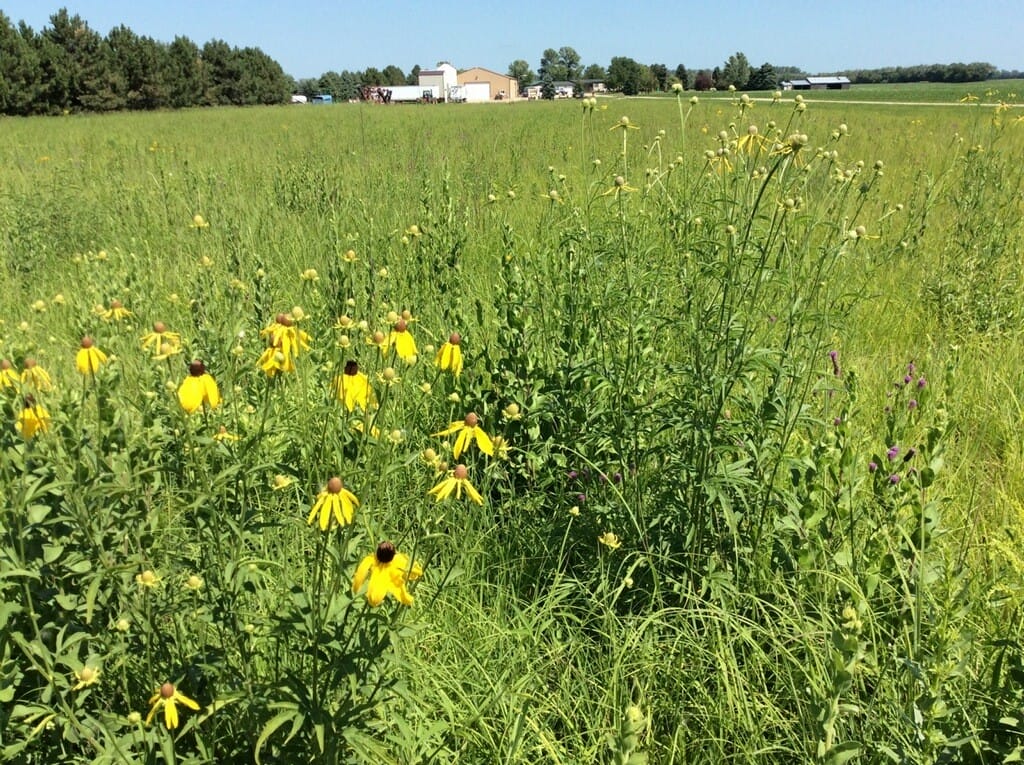Blooming Benefits: Bringing Pollinator Plots to the Farm
As we begin to plant our gardens this year, Latham Seeds’ very own Gary Geske wants us to set aside some space for the tiny creatures that play a huge role in crop reproduction, sustainability and food security. These are Mother Nature’s pollinators such as bees, butterflies, hummingbirds and beetles.

Gary Geske
Gary has first-hand experience on what avid gardeners call the “pollinator project.” April, he says, is the perfect time to think about what pollinator plots are – and how they can be incorporated into backyards and farm fields.
“Everybody tends to have a garden that ends up getting bigger than they want it to,” says Gary, who has worked for Latham for 13 years and is our corn product specialist. “So, take an end of the garden and just plant some wildflowers. Or use flowers around the border of the garden. It will attract bees to pollinate your watermelon or other vegetables, and it will help the environment, too.”
Farmers can also contribute to pollinator plots by planting a diverse mix of native wildflowers somewhere on their land. These flowers provide a much-needed variety of pollen and nectar sources during the growing season – and they attract an even more diverse range of pollinators.
“Take a look at that odd, two-acre spot on your farm . . . that awkward spot in the corner where it’s hard to get equipment in,” Gary suggests. “Turn that into a safe zone for honeybees and other pollinators. Put it somewhere that’s not easy to get to, so it truly becomes a haven for them.”
Gary, who farms in North Dakota, planted two acres of tall grass prairie along his driveway. It includes flowers that make it a true pollinator plot. He says it also feels like he “recreated the old west.” Other farmers in his area have started tilling field borders or the sides along their driveways and planting flowers there, too.
“The terms ‘pollinator plot’ and ‘ornamental planting’ can be the very same thing,” Gary says. “Whether intentional or not, incorporating plants that give food and shelter to pollinators is a good thing for all of us.”

2 acres of Tall Grass Native Prairie planted along our driveway with wildflowers in the mix for pollinators
Because pollinator populations have been declining over the years due to habitat loss and other factors, it’s more important than ever that farmers help reverse the trend. Because in order to thrive, these invaluable ecosystems need our gardening help.
Says Gary: “It really doesn’t take much to make a big difference.”
Check out other related blogs on The Field Position… for yummy Hummingbird Cake!
Honey Butter
Ingredients
- 1/2 cup butter, softened
- 1/4 cup honey
- ½ teaspoon ground cinnamon (optional)
- Pinch of salt (optional)
Instructions
- Place butter in large bowl and whip with mixer until fluffy. (Can save time by buying tub of "whipped butter" from the grocery store.)
- Add honey, cinnamon and salt. Mix until smooth.
- Store in airtight container at room temperature for 1 week or in the refrigerator for 4 weeks.
Spread honey butter on a slice of homemade beer bread, a toasted English muffin or corn bread.